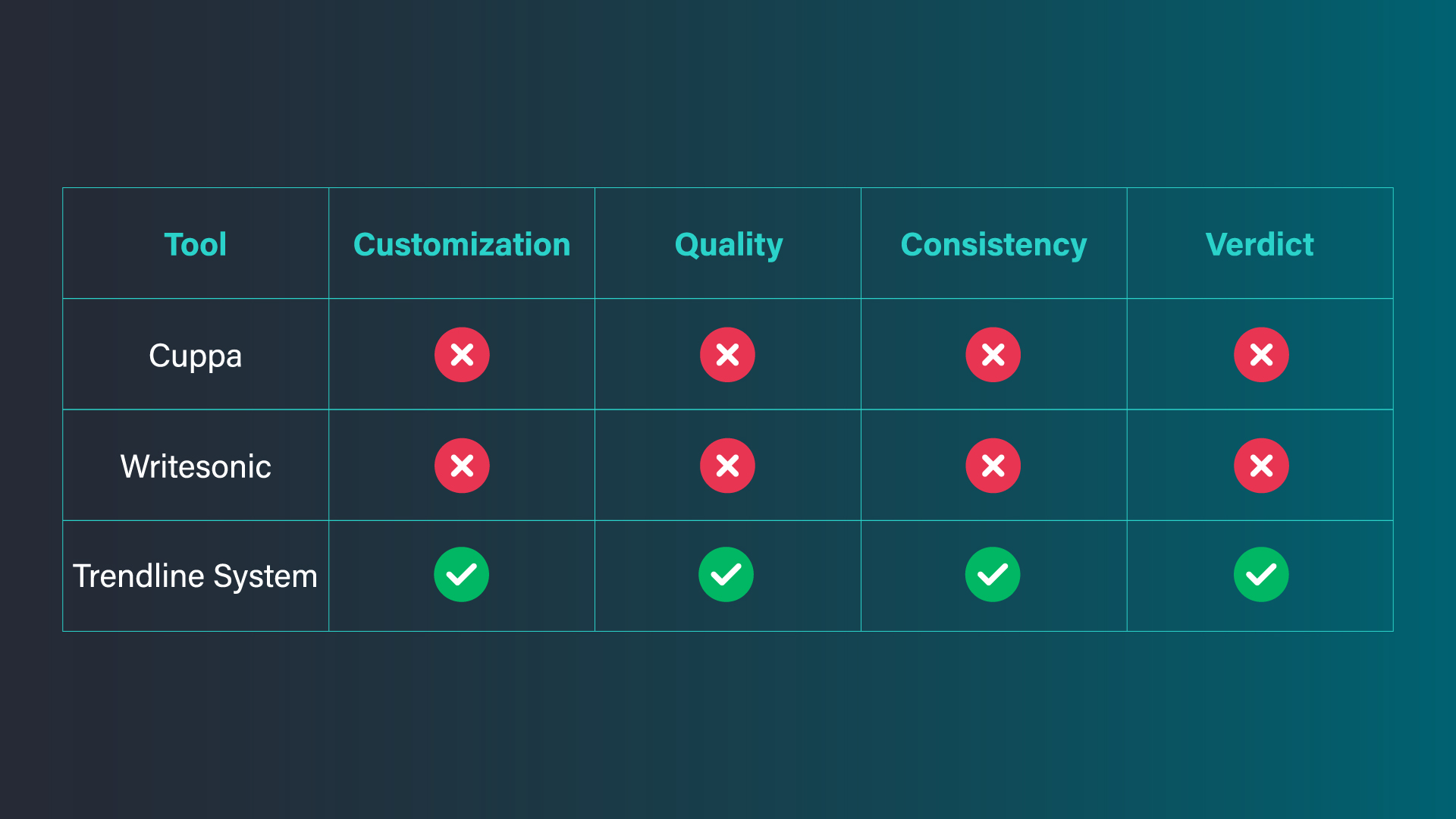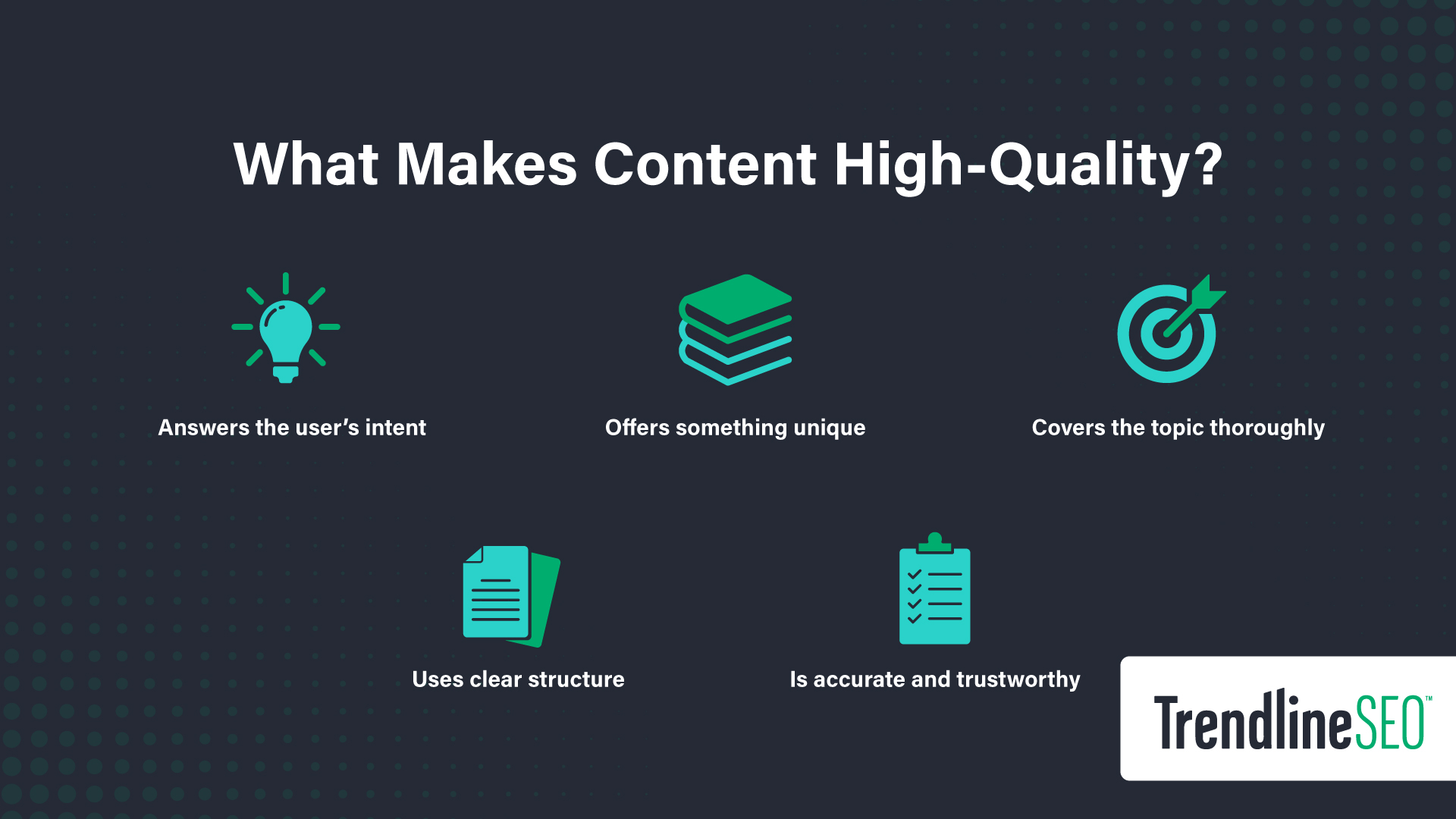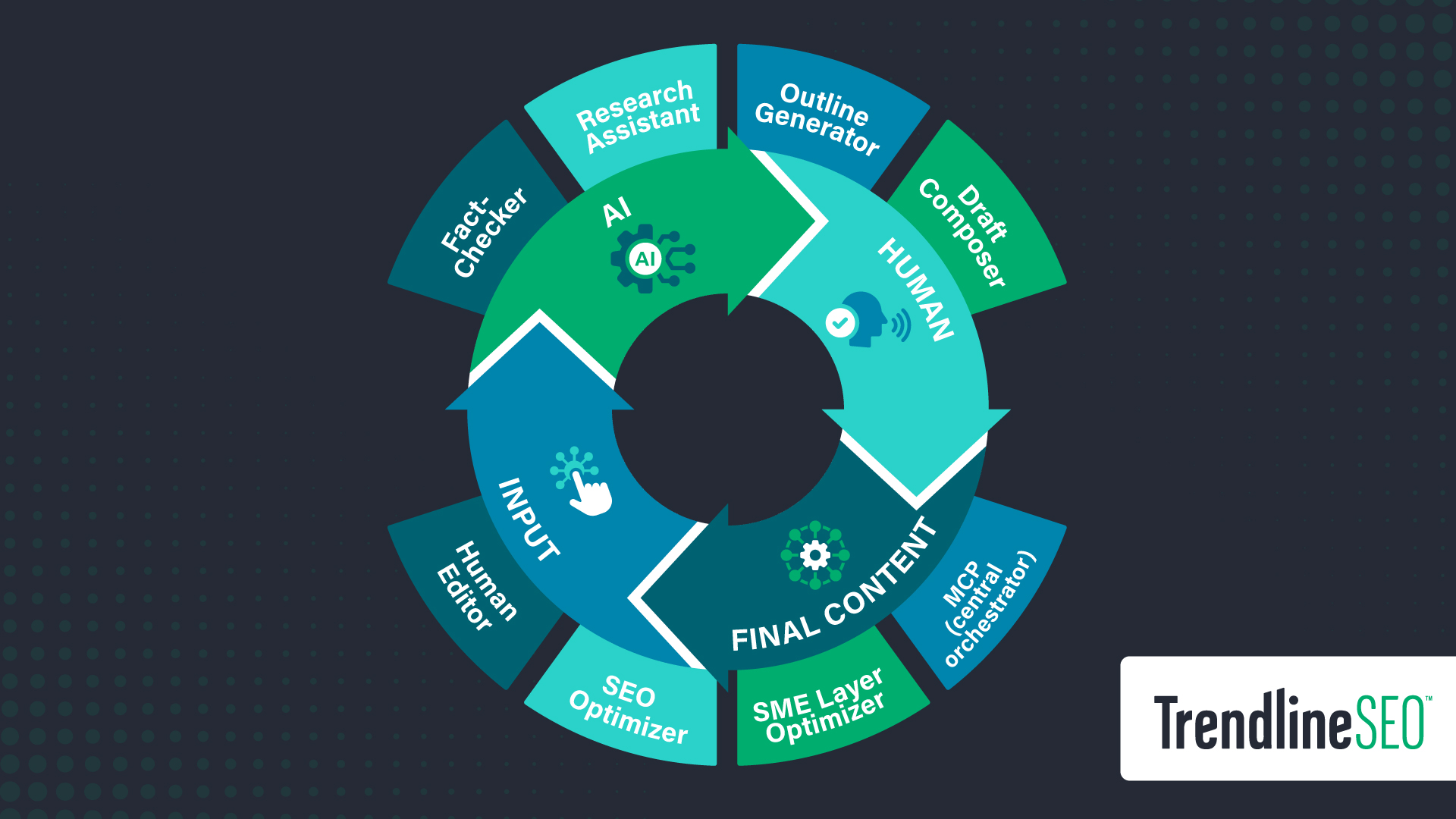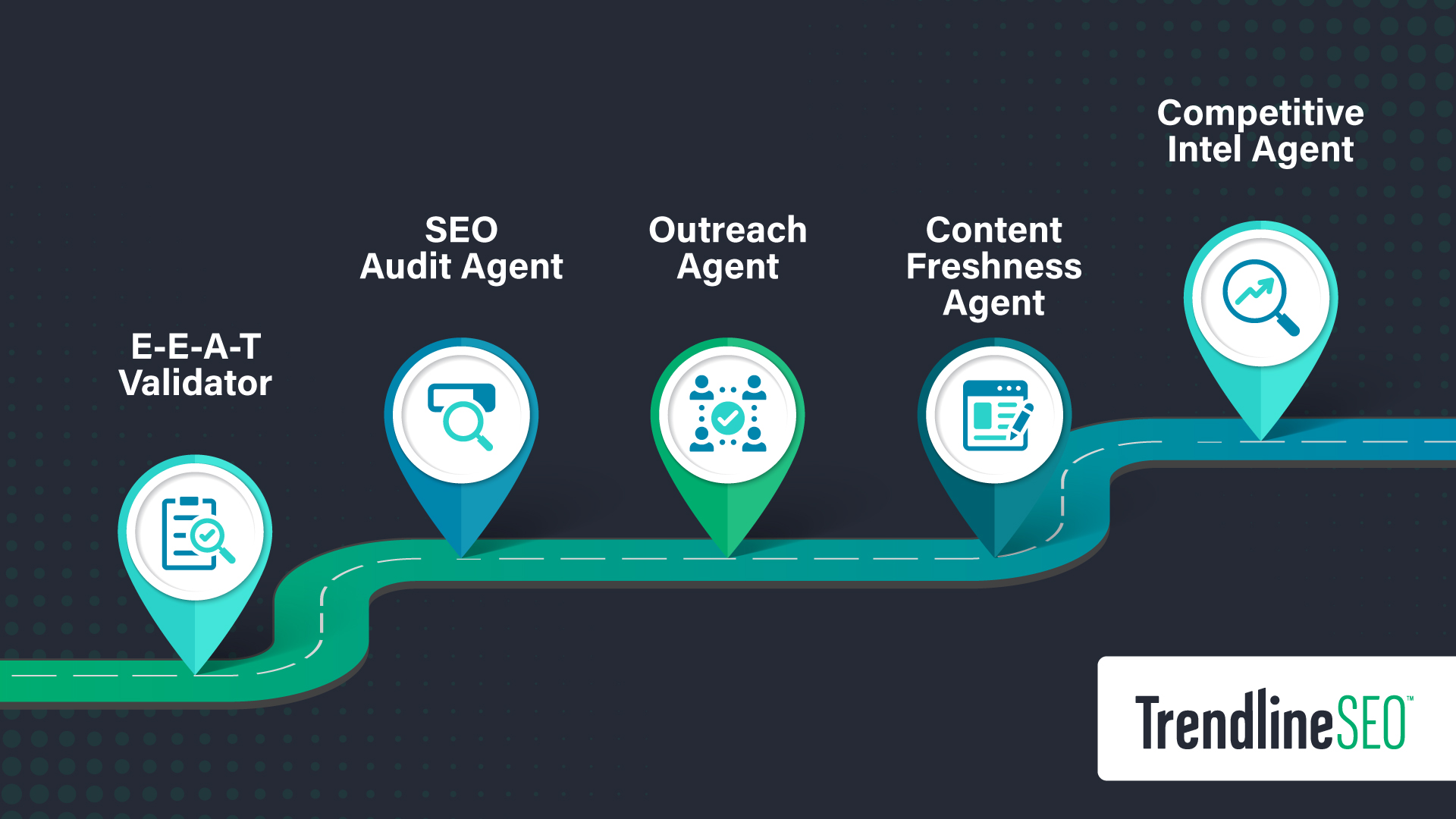
How We Built a 10x Smarter Agentic AI Content System
Discover how Trendline SEO built a modular AI content system that slashes costs, boosts quality, and mirrors expert-created content at scale.

Project overview
At Trendline SEO, we faced a problem many agencies know too well: hiring reliable writers who consistently deliver genuinely insightful, human-sounding content.
We’d shell out $100 per piece to freelancers, only to get back content that was surface-level, often flagged by tools like Originality.ai, and lacking the depth or nuance Google demands under its E-E-A-T framework.
While we still work with a core of skilled human writers and subject matter experts, the reality is that they’re getting harder to find.
And in today’s SEO climate where content must be credible, experience-rich, and genuinely helpful, mediocre just doesn’t cut it.
So instead of chasing new writers, we pivoted by building a smarter system.
I have been obsessively integrating AI into all of the agency's workflows, so much that we now have an automation service. So this was a natural next step.
What came out of that effort is what we now call our agentic, AI-driven content engine.
This is designed to produce human-quality, E-E-A-T compliant content at scale.
The results exceeded expectations:
- Content costs dropped by over 90%
- Throughput increased tenfold
- Articles ranked faster and higher than ever
I'll show you how we did it below. But before I do, I want to address the elephant in the room.
Why We Didn't Just Use ChatGPT
A question we get a lot is why not just plug the keyword into ChatGPT and call it a day?
Yes, ChatGPT is impressive, but its baseline outputs are generic.
Basic outputs from most LLMs are generic, surface-level, and usually stitched together from common clichés or vague summaries.
Even with a Pro account like I have, it is hard to get consistent outputs from the system without a ton of work.
Without a carefully engineered system behind it, you're stuck with content that fails to convey real expertise or genuine insight.
It's cheap, yes, but cheap shows. We weren't willing to publish thin, easily detectable AI content - let alone charge a client for that type of junk.

We knew that to meet Google’s standards and our clients' expectations, we needed something deeper.
We had to build a structured, multi-layered system that could reliably produce authentic, nuanced content reflecting true expert perspectives.
Other Systems We Tried
We also tried popular ChatGPT alternatives like Cuppa AI and Writesonic. Both platforms are marketed as an interface that can lay on top of various LLM models so I figured they'd be worth a try.
After playing around with both, neither could reliably replicate high-quality content that we knew we needed to produce.

The application layer was there in theory but I wasn't able to customize each step enough to make the system do what I needed it to do.
The missing piece was the multi-layer, custom-built approach that we ended up creating ourselves.
So, we set out to try building our own from scratch.
Project execution
Step 1: Defining What “Good” Looks Like
Before touching a single AI model, we reverse-engineered ten years of high-performing evergreen content across local, national, and B2B campaigns.
We analyzed over 300 of our most successful articles, isolating clear signals of quality:
- Clear formatting and intuitive structure
- Natural keyword usage, not stuffing
- Strong narrative flow
- Genuine insights and credible citations
- Trustworthy author bios
We aligned our findings directly with the exact guidelines that Google is looking to rank, ensuring the system wasn't guessing at quality - it knew exactly what "good" meant.

This was actually the easy part since high-quality, human-first content and quality deeply engrained into every post we already produce and publish.
We've written millions of words over the past decade, so we knew what to look for.
What I didn't expect to be so hard, however, was working in reverse to actually figure out how to convert that quality into a repeatable system.
Step 2: Engineering Precise Prompts
Next, we had to create prompts that would allow us to create each individual part of the system. I ended up signing up for a bunch of different AI tools and trying them all out.
My thought was that if I could get consistent outputs within the individual tools, I'd be able to replicate those outputs when we hooked into the APIs later.
But prompting is where most AI projects fall short, us included.
Initially, we’d run a simple blog prompt through an LLM and watch it generate bland, padded copy. It “sounded” like writing, but said nothing.
That’s when we realized we needed to stop thinking like marketers and start thinking like engineers.
I ended up breaking the problem into individual "roles" like researcher, strategist, writer, or editor.
From there, I gave each one their own prompt playbook. These included:
- Research Prompts
- Outline Prompts
- Drafting Prompts
- Fact-Checking Prompts
- SEO Optimization Prompts
This methodology is the "multi-layer" approach that makes the entire system so powerful.
Research Prompts were the hardest to get right.
We built a protocol where uploaded documents were parsed into structured insight blocks (facts, quotes, stats, examples) ranked by credibility and freshness.
It wasn't just about gathering info. It was about recognizing what mattered most.
Outline Prompts took a different path.
These weren’t rigid outlines, but rather strategic content maps. The goal was to model how experts think.
We trained them to think top-down:
- What's the search intent?
- What information is needed to meet that need?
- What does a reader need to know before they trust this page?
In theory, we've seen other AI systems do this step well. However, we directly instructed our outlines to work with the next step - drafting prompts.
Drafting Prompts were surprisingly intuitive once the groundwork was in place.
We spent the least time here because the research and outline stages were so well-structured. Claude Sonnet could glide right through and sound almost shockingly human.
Fact-Checking Prompts worked quietly in the background but were very important in preventing hallucinations - the stuff that LLMs make up.
They verified named entities, stats, and claims against our source docs and known databases, flagging anything that felt shaky.
SEO Optimization Prompts got experimental.
We didn’t just inject keywords. We taught the system to feel when a heading needed semantic reinforcement, or when a section was dragging.
We even built tone adjusters for industries like legal, medical, and SaaS.
Each layer was not only useful, but elevated the next.
And after enough iteration, we hit a sweet spot: content that was 75–80% ready to go, straight out of the system.
Step 3: Layered AI Architecture
But we we discovered quickly that one AI model wasn't enough. Great content requires multiple specialized roles - researchers, writers, editors, SEO strategists -working in sync.
Imagine a newsroom staffed with specialists, each one laser-focused on their piece of the story. That’s what our AI stack became.

First up: ChatGPT Pro.
With its deep-research plugin stack, it became our tireless researcher.
It pulled quotes from industry studies, identifying relevant SERPs, even flagging outdated stats. If there was gold in the data, it would find it.
Then came OpenAI’s logic-driven models, which helped us map content architecture.
These models weren’t writers, they were planners.
They understood cause and effect, priority and flow. They helped shape what we’d call the “reader journey.”
Now enter Claude Sonnet.
This model surprised us. Its tone was warm but intelligent, and it could emulate a subject-matter expert better than anything else we tested.
We gave it the outline, the research, and the tone rules, and it delivered.
On the back end, we deployed Micro-agents.
These are small autonomous units trained to do one job well.
One checked link structure, while another confirmed fact accuracy, and a third ensured the reading level was spot on.
They acted like quality control bots, catching what humans missed.
All worked together through an MCP which is the brain of the operation.
Think of it like an orchestra conductor, cueing each instrument at the right time to create something cohesive.
Without it, we’d just have noise. With it, we had harmony.
Step 4: Keeping Humans Central
Despite how much we automated, the system sometimes still failed and we'd have to run it again.
We published three articles: one written entirely by a human, one fully AI-generated, and one produced by our system with human editing.
Guess which one ranked first? Not the fully human draft, nor the raw AI version. The hybrid won by a mile.
This proved that our initial approach was solid - we're not replacing humans, we're just repositioning them.
Our editor doesn’t have to start from scratch anymore. They step in at the 80% mark to refine the voice, trimming the fluff, and shaping transitions.
Then our SME layers in personal insights, field-tested recommendations, or hard-won lessons that only come from experience.

This process isn't just faster, but it's also better.
And every time something’s off, we don’t just fix the article, we upgrade the system. It’s a closed feedback loop, where each correction makes the next draft sharper.
Review time dropped from 45 minutes to 12. But what we gained wasn’t just speed. It was consistency.
Step 5: Streamlined Interface and Execution
We didn’t want to build something that required training manuals or onboarding calls. We wanted something anyone on the content team could use.
Here’s how it works:
- Run a research report and let the research assistant draft a document
- Select the site variable, which auto-loads their voice, tone, and guidelines
- Choose the content type (How-To Guide, Review, Alternatives, etc...)
- Upload the research doc that was created in step 1
- Drop in your main keyword
- Toggle optional modules like internal linking, semantic enrichment, or meta tag generation
- Hit "Generate"
Within 10 minutes, the system hands you a draft that reads like it took a senior content strategist two hours to write.
It’s the cleanest, fastest UI we’ve ever worked with, and it’s changed how we operate.
Project results
Concrete Results and Immediate Impact
This wasn’t an incremental upgrade. It was a transformation.
We used to write maybe two solid pieces of content a day. Now we can generate and refine over 20 - without hiring a single additional writer.
Costs? Down more than 90%. Quality? Up across the board. Articles index faster. They rank quicker. They stick longer.

The real win? Our clients now ask us how we’re writing such good content so fast. That’s how we know it’s working.
And this is just the beginning.
Why It Works So Well
This system isn’t built on theory—it’s built from a decade of real-world SEO experience. Everything is modular, scalable, and constantly improving. As Google evolves, we adapt.
And because it's rooted in actual brand voice and research-driven inputs, the content doesn’t just pass—it impresses.
What's Next
We’re expanding this framework into multiple new automations:
- E-E-A-T Validator: For deeper quality checks
- SEO Audit Agent: For technical SEO
- Lead Gen & Outreach: AI-powered prospecting and campaigns
- Content Freshness Agent: Automatically updates old posts
- Competitive Intelligence Agent: Tracks gaps and opportunities
Each system is designed to handle a pain point—whether that’s research, link building, reporting, or content ideation—so you scale without burning out.

Final Takeaway
We didn’t bolt ChatGPT onto an old process. We reengineered everything.
Now we can produce human-quality content at machine speed and cost. And we’re just getting started.
If you want to see it in action, reach out. I’d love to show you how it can transform your SEO output.


